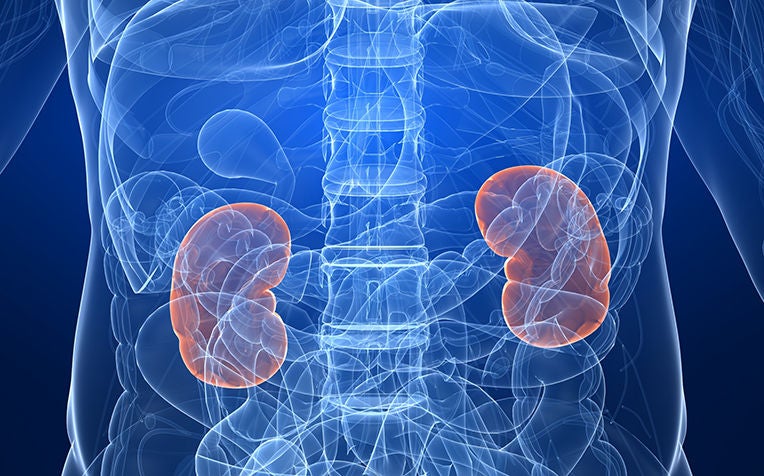
Although kidney failure may potentially be life-threatening, it may also be reversible if the cause is treated or removed early.
Having kidney failure means your kidneys are unable to filter excess fluids and waste products from your blood. This results in a dangerous buildup of toxins, fluids and wastes in the blood. To stay alive, you need regular kidney dialysis, or a kidney transplant.
“Although kidney failure is potentially life-threatening, acute kidney failure may be reversible if the underlying cause of the sudden loss of kidney function is treated or removed early,” says
Associate Professor Terence Kee, Senior Consultant from the Department of Renal Medicine at Singapore General Hospital (SGH), a member of the
SingHealth group.
There are steps you can take to lower your risk of kidney failure.
11 Ways to prevent kidney failure and chronic kidney disease
You can reduce stress on your kidneys with the following lifestyle changes.
Eat a diet low in sugar, salt and fat. Prepare your own meals (as much as possible). Doing so allows you to control what goes into your food.
Avoid a high-protein diet that can overtax the kidneys.
Practice portion control - Have 2 servings of fruits and 2 servings of vegetables daily, with whole grains and lean meat.
Minimise your risk of obesity, diabetes, high blood pressure (hypertension) and other chronic illness. Maintain a healthy weight by keeping active and not overeating.
If you have diabetes or are diagnosed with hypertension, do the following:
Maintain good blood sugar levels
Keep blood pressure in the normal range
Control blood cholesterol
Visit your doctor regularly
Take your medication as prescribed
Limit alcohol consumption (max of two drinks per day for men, and one drink per day for women).
Do not smoke.
Maintain a healthy body weight (Asian should aim for a BMI of 18.5 to 22.9).
Exercise 3 to 5 times per week, for a total of 150 minutes of moderate to vigorous exercise.
Early health screenings are key to detecting kidney failure, as most people with early stages of kidney disease do not present clear symptoms
Kidney failure: A growing problem in Singapore
Here are some alarming statistics on kidney failure in Singapore, provided by the
National Kidney Foundation (NKF).
|
Common causes of kidney failure
There are many causes of kidney disease and these affect the kidney to different degrees, causing them to fail at different rates. Some of these are inherited, and while others are related to existing conditions such as diabetes, and other inflammatory conditions or infections.
The common causes of kidney failure can be classified into five key groups:
1. Diabetic nephropathy
This is kidney failure from long-standing and poorly-controlled diabetes. It is now the most important cause of end-stage renal disease in Singapore and elsewhere in the world.
Patients with diabetes mellitus commonly have many other associated problems. These include heart attacks, strokes, eye disease, gangrene, numbness of the feet, and rapid swings in blood pressure from a lying to standing position. They are also prone to infections of the abdomen, skin, ears and feet.
2. Chronic glomerulonephritis
This refers to a group of different kidney diseases that initially affect a specific microscopic structure of the kidney called the glomerulus. The most common form is called Ig A (pronounced as I-G-A) nephropathy. This kidney disease can take from 3 to 40 years before reaching end-stage renal disease.
There are many others as well (focal and segmental glomerulosclerosis, membranous glomerulopathy, membranoproliferative glomerulonephritis, to name a few).
3. Polycystic kidney disease
This is a form of inherited kidney disease associated with the development of multiple sacs of fluid (cysts) within the substance of the kidney. These patients tend to develop hypertension, kidney stones, and recurrent urine infection or infections of the cysts of the kidney.
They can have other associated problems, the most serious of which is a rupture of the blood vessels of the brain (called a leaking berry aneurysm), which can bring on a sudden and severe headache.
4. Lupus Nephritis
Patients with immune disorders called
systemic lupus erythematosus (SLE) commonly develop kidney disease. The patterns of kidney disease vary widely and their responses to therapy vary.
Patients with SLE suffer usually from many other manifestations of their disease. These include hair loss, joint pains especially of the hands, wrists and knees, facial rash, mouth ulcers and involvement of the gut, lungs and blood.
5. Reflux nephropathy
This is another inherited disease characterised by recurrent urine infection in childhood associated with a backwash of urine from the bladder upward into the kidney during urination. This leads to kidney scarring, loss of kidney tissue and kidney failure.
“If you suffer from diabetes or high blood pressure, it is really important that you properly manage your condition in order to prevent chronic kidney failure, which can progress to end-stage kidney disease,” cautions Assoc Prof Terence Kee.
Symptoms of kidney failure
Early stages of kidney failure usually show no specific symptoms. However, if there are symptoms, they can be easily mistaken for trivial conditions such as:
Nausea and vomiting
Loss of appetite
Fatigue and unwell feelings
Persistent itching and dry skin
Insomnia
Muscle cramps and muscle twitching
Headaches
Decreased mental alertness
As chronic kidney failure progressively worsens, the following symptoms may appear:
High blood pressure
Swelling of the legs (called oedema)
Breathlessness
General symptoms of poor sleep, loss of appetite and lethargy
A bad smell in the breath called a uraemic fetor
Cramps
Numbness of the feet
Passing a lot of urine especially at night (called nocturia), or conversely too little urine.
Chronic generalised itch
Blood in the urine, which usually reflects the underlying kidney disease
Soapy urine or frothy urine, which reflects the presence of protein in the urine
Not all patients develop all these symptoms. Some develop these symptoms during different stages of their disease.
Also, it is important to realise that these symptoms do not necessarily only mean that one has kidney disease. Each disease affects each patient differently and to different extent.
Treatment of kidney failure
Treatment will depend on the underlying cause for the kidney failure. However, once kidney failure reaches a certain degree, it usually will progress to end-stage kidney failure.
Nevertheless, there are some common treatment that can benefit most patients with established kidney disease.
1) Treat hypertension (high blood pressure)
It is important that high blood pressure is treated. Apart from medication that a patient should take regularly, the patient should also restrict his salt intake, and try to lose weight.
Regular clinic visits or home blood pressure monitoring gives the doctor the needed information so that blood pressure treatment can be adjusted to suit the patients needs and achieve appropriate blood pressure levels.
Apart from reducing the progression of renal failure, blood pressure control has the important added advantage of reducing the risk of heart attacks and strokes.
Doctors may prescribe angiotensin-converting enzyme (ACE) inhibitors and angiotensin II receptor blockers (ARBs) to lower high blood pressure.
2) Anti-proteinuric therapy
Some kidney diseases are associated with protein loss in the urine. Certain medications can decrease / lower the amount of protein excreted in the urine. This group of drugs (called angiotensin converting enzyme inhibitors) needs to be prescribed by the doctor.
These drugs are usually prescribed more commonly in the early stage of renal disease. While on this treatment, the patient will need to have regular checks of the kidney function. This group of medications can effectively reduce the progression of renal disease.
Not all patients are suitable for this form of treatment, nor do all patients tolerate this medication equally well. They can be associated with intolerable cough, and like any medications, may cause some patients to develop an allergic rash.
"Kidney failure may be reversible if it has developed suddenly due to an autoimmune disease, an infection or physical injury to the kidneys. For example, doctors can treat blood clots, kidney stones and any infections causing the sudden kidney failure.
However, chronic kidney failure is usually not reversible. The goal of treatment is to slow progression towards end-stage kidney disease,” says Assoc Prof Terence Kee.
References:
1. USRDS Anual Report 2023
2. National Ppoulation Health Survey 2022, SingStat
3. Singapore Renal Registry Annual Report 2021
Ref: H24 (ed)
Check out other articles on kidney health:
Glomerulonephritis: A Leading Cause of Kidney Disease
Kidney Cancer: How It Is Diagnosed and Treated
Link Between Red Meat and Kidney Failure
Kidney Stones: Causes and Common Symptoms
Kidney Failure in Singapore: Quick Facts


















 Get it on Google Play
Get it on Google Play